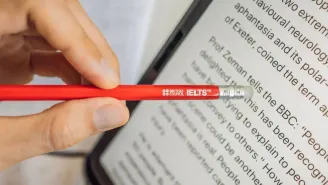Bakelite Reading Answers
BAKELITE - The birth of modern plastics
Paragraph 1
In the passage Bakelite Reading Answers, In 1907, a Belgian scientist named Leo Hendrick Baekeland working in New York, discovered and patented a new revolutionary synthetic substance. His invention, which he named ‘Bakelite’, was of great technological importance and led to the launch of the modern plastic industry.
Paragraph 2
The word ‘plastic’ originated from the Greek word plassie, which means ‘to mould’. Plastics can be derived from natural sources. Some plastics are semi-synthetic, which is a result of chemical action on a natural substance. Some types of plastics are entirely synthetic, i.e., chemically engineered from the components of coal or oil. Plastics have a ‘thermoplastic’ behaviour, which means that they melt when heated and can then be reshaped like candle wax. Few others have ‘thermosetting’ characteristics like eggs. They cannot go back to their original state, and their shape does not change forever. Bakelite became the first totally synthetic thermosetting plastic.
Paragraph 3
The history of today’s plastics dates back to the mid-19th century with the discovery of a series of semi-synthetic thermoplastic materials. The need for the development of these early plastics was due to many factors, like immense technological progress in the domain of chemistry, along with wider cultural changes and the practical requirements to discover suitable substitutes for decreasing supplies of luxury items like tortoiseshells and ivory.
Paragraph 4
Baekeland has been interested in plastics since 1885. As a young chemistry student in Belgium, he started researching phenolic resins - a group of sticky substances produced when phenol (carbolic acid) combines with an aldehyde (a volatile fluid similar to alcohol). However, He stopped the subject, only returning to it some years later. He became a wealthy New Yorker in 1905 after he had made his fortune with the invention of a new photographic paper. While Baekeland had been busy making money, some innovations had been made to develop plastics. The first semi-synthetic thermosetting material was patented between 1899 and 1900 and could be made on an industrial scale. In scientific terms, Baekeland’s work in this field does not contribute so much to the actual discovery of the material to which he gave his name but rather how the reaction between phenol and formaldehyde could be controlled to make its preparation possible on an industrial level. Baekeland took out his famous patent with the preparation and the essential features on 13 July 1907, which are still in use today.
Paragraph 5
The original patent was a process that had 3 stages, where phenol and formaldehyde (from wood or coal) were first mixed inside a vacuum in a large round kettle. A resin was formed from it known as Novalak, which becomes soluble and malleable when heated. Then the resin was let to cool in small trays until it became hard, and then was smashed and ground into powder. Other substances (fillers) like wood flour, asbestos or cotton were introduced, which increase strength and moisture resistance, catalysts and hexa (a compound of ammonia and formaldehyde which supplied the additional formaldehyde necessary to form a thermosetting resin). The resin was then given time to cool and harden and was again powered for a second time. This granular powder is the raw Bakelite, which can be made into numerous types of solid objects. In the final stage, the Bakelite is heated and poured into a hollow mould with the required shape and is exposed to extreme heat and pressure, and setting its form forever.
Paragraph 6
From chairs to TV sets, the design of Bakelite objects was governed to a large extent by the technical needs of the moulding process. The object cannot be designed, so it is locked into the mould and is tough to extract. A common rule was that objects should move towards the deepest part of the mould, and if necessary, the piece was moulded as separate pieces. Moulds should be carefully designed so that the molten Bakelite can flow properly and evenly into the shape. Sharp corners were not practical, so it had to be removed, giving rise to the smooth, ‘streamlined’ style which was popular in the 1930s. Thick walls take longer to cool and harden. The thickness of the walls of the mould was very crucial - a factor which had to be taken into consideration by the designer to make the most out of the machines.
Paragraph 7
Baekeland’s invention was treated with arrogance by the public in the early years. But it gained unmatched popularity which lasted throughout the first half of the 20th century. It became a spectacular invention for the industrial expansion of the New World. It was described as a material of a thousand uses. Bakelite, being non-porous and heat-resistant, was used to manufacture kitchen goods and was advertised as being sterilisable and germ-free. Electrical manufacturers caught on to its electricity-insulating properties, and people admired its bright shades of colour, at last, delighted that they were no longer restricted to the wood tones and dark brown colours of the pre-plastic era. In the 1950s it then became unpopular and was neglected and destroyed in large quantities. Recently, it again gained popularity with more requirements for original Bakelite products in the collectors’ marketplace, and museums, societies. People once again appreciated the style and originality of this innovative material.
Bakelite Reading Answers
Discover exciting and informative IELTS reading answers about Bakelite






